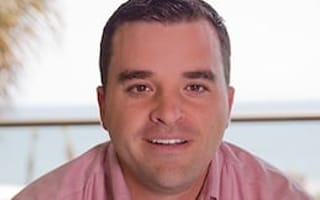 What does it mean to be a CTO in a company that pre-dates the Civil War?
What does it mean to be a CTO in a company that pre-dates the Civil War?When that company reinvents itself to be a global database with more than 220 million business records — it means a whole lot.
Aaron Stibel, who joined Dun & Bradstreet in 2010 and now serves as CTO of Emerging Businesses, has been simplifying online data for more than a decade and has several patents for such technologies issued under his name. He is a prominent figure in the U.S. tech community, having been named to the CIO100 in 2013, and a key player at Dun & Bradstreet’s innovative Malibu office. We caught up with Aaron to hear how technology continues to drive the company's success:
What technologies power your business?
We made the decision early on to push anything that was not core to SaaS and to the cloud. We operate a single Java product platform that we built in-house. Everything else is cloud sourced from companies like AWS, Microsoft, Five9, and Zendesk. This allows us to be product focused 100% of the time. For a company with over two million customers and millions of transactions per day, plus 1,000 sales associates making over 500,000 calls per month – we have surprising few technologies.
What technologies are playing the biggest roles in Dun & Bradstreet this year?
While our Java platform continues to do the job, the front end – JSF -- has become cumbersome. We are currently redeploying products in Angular, utilizing our internal REST APIs. Once this is complete, we will be able to produce new products even quicker and will benefit from the fully-baked Java system and data model we built four years ago.
What are the biggest tech projects your team is working on this year?
The largest project we have is creating the new version of DNBi, which is Dun & Bradstreet’s primary risk management product. Our product and technology teams, which are located in many countries, are working together to redeploy DNBi with a global focus. When complete, our customers will be able to manage credit and risk on over 240 million businesses across the globe from a single platform.
What are the biggest technology challenges you've faced in the past? How did you overcome them?
The biggest challenge we have is getting people to feel comfortable taking risks. And when it comes down to the individual engineer, developing this comfort level becomes even more difficult. They don’t want to fail and they don’t want to move too quickly. Traditionally, technology departments in large organizations are risk intolerant, but that’s not the case with Dun & Bradstreet. With our teams, we have found that the best way to manage risk taking is to highlight successful projects. When the entire team celebrates together on huge wins, they become much more tolerant of fast paced development and shrug off the failures.
What are lessons you've learned about working in LA that other local entrepreneurs can learn from?
LA is lucky to have a relatively small and tight tech community. That’s not going to last at this pace of growth and that’s both exciting and challenging. My suggestion is to take advantage of the access. Events such as NewCo and Digital Hollywood, and organizations like Silicon Beach LA, Digital LA and many more, give you unprecedented access to top entrepreneurs, engineers, and VCs that you wouldn't get in the Valley.
How will LA specifically continue to strengthen its tech community in 2015?
We used to see a large number of engineers and entrepreneurs going to the Bay area. That’s not happening anymore. LA has a very real startup community and that is only going to get stronger as more funding comes to LA.
Los Angeles is known for having a large talent pool of thirsty, young workers. What are the top characteristics you look for in a potential hire?
We like business minded engineers. I always want to see product and technology working together. That requires product people with a sense of technology and engineers with a sense of business motivation.
How would your team describe working with you?
Certainly not boring. We tend to move extremely fast. While we are Dun & Bradstreet, you wouldn’t know it at our LA office in Malibu. We innovate and create products quicker than any team I know. We are not afraid of mistakes or failure; to the contrary, we welcome failure. If you’re not failing, you’re not trying, or learning.
What trends do you see happening in the industry over the next three years? How is Dun & Bradstreet anticipating those trends and working towards them?
I think larger companies will continue to act more like startups. They will understand that Cloud and SaaS – even in non-traditional segments – can be secure and efficient. We have proven our products can work in the cloud and are moving our primary products to modern architectures. We have also aligned technology, product, and marketing into a lean startup-like team. If Dun & Bradstreet at 175 years old can operate like a startup, any company can.
What else do you want the LA startup community to know about Dun & Bradstreet?
Dun & Bradstreet is dedicated to entrepreneurship from within. We may be a multi-billion dollar organization, but there are no cogs here. If you want to work on killer projects with awesome people – and do it all at the beach – this is the place.



